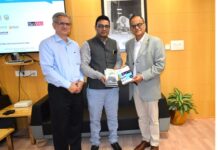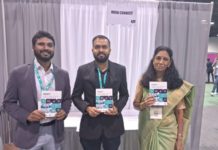New Delhi: With young Indian adults enjoying the benefits of economic prosperity, changing lifestyle, coupled with genetic pre-disposition, which adversely and somewhat unfairly affects them, an entire generation of India’s population is facing a clear and present danger, claimed leading doctors at a discussion on October 21, 2016. Over 200 researchers and doctors from all over India are attending the Protect Young India Summit, hosted by the NCD PreDisease Forum in New Delhi.
This burden of premature cardio-metabolic diseases on the productive workforce aged 30–60 years is cause of larger social and economic concern, said the experts. Experts believe, that it’s time we focus and target specifically this at risk population so that people on borderline cases, or pre-disease stage, can take proactive steps before disease sets in, and it becomes a point of no return. The doctors were deliberating on the findings of the ESSENS study, conducted across India to evaluate the efficacy and safety if food-derived bio-actives in lowering the risk factors for heart disease and diabetes.
Diabetes and heart disease present serious health challenges for India. Guidelines governing treatment mandate that prescription drugs usually come into play only after the confirmed diagnosis of the condition (diabetes or high cholesterol). This also implies that for a large section of population that is on the cusp of these conditions, which is known as the pre-disease state, with higher than normal blood sugar and cholesterol levels, there is no pre-emptive intervention presently possible. Lifestyle modifications are one possible pre-emptive avenue but experience has shown that these often do not have desired impact due to low compliance.
“We need to focus on delaying the onset of disease in this at risk population using novel lifestyle interventions or interventions through food – derived bioactives in high risk population there by saving huge expenses and complications of disease” said Prof N K Ganguly, former Director-General of Indian Council of Medical Research (ICMR) and Director of the NCD Pre-Disease Forum, India, an affiliate of the Global Forum. “India has a high burden of non-communicable disease. We are facing a perfect storm of compounding factors which is unique in almost every aspect- epidemiology, genetics, patient beliefs, availability of resources, and finally, governmental will and efforts to fight them. But, policy interventions by government or awareness campaigns will be effective only when individuals take pro-active steps for their own health care”, he added.
According to Dr Ravi Kasliwal, Chairman – Preventive Cardiology, Medanta- The Medcity, “Every day at Medanta we see younger and younger adults coming in with heart attacks. This in not only a tragedy for the individual, but has consequences for the family and society as a whole. Its imperative we focus on solutions which young people can adapt easily and set achievable goals, for example, lowering the LDL-Cholesterol to 100 mg/dL”.
Dr Abraham Oomman, a senior consultant cardiologist from Chennai, one of the investigators in the study said “The ESSENS data showed that most subjects could achieve the goal of LDL-Cholesterol level of 100 mg/dL during the period of the study using the investigational bio-active”. He went on to add “Now, this bio-active is included in the 2016 clinical practice guidelines to lower cholesterol by the European Society of Cardiology.”
Rather than repeating discussions around grim statistics, the meeting was focused on solutions particularly geared for the at risk population and the educated workforce, Dr Sanjay Kalra, Executive Editor of the Indian Journal of Endocrinology and Metabolism said, “Instead of Diabetes, we should focus on the Pre-Diabetes state, where we have the best opportunity to reverse the course of the young individual’s future health.” He continued “In fact, the guidelines also clearly state that lifestyle modification and nutritional intervention should be tried before any medication for a newly diagnosed patient with increased blood sugar.”
“We must intervene earlier before our patients develop disease. But, in order to do that, the first step is to recognize the entity of predisease,” said Dr. Hemant Thacker, a leading doctor from Mumbai. “While there is no complete cure, we should, in the least, know when and with what to pre-emptively strike disease from progressing, in the pre-disease stage,” he added
South Asians, including Indians, have a greater pre-disposition towards lifestyle diseases. Even in the US, the MASALA (The Mediators of Atherosclerosis in South Asians Living in America) study currently underway, aims to understand what factors lead to the magnitude of heart disease among South Asians.

































































